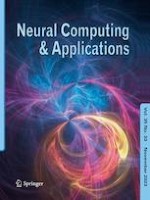1 Introduction
2 Related work
Subject | Authors and publications | Description |
|---|---|---|
Support of heterogeneous connectivity | The 3rd Generation Partnership Project (3GPP) worked on interworking of cellular network and WLAN, dual connectivity of cellular user with 4G LTE and 5G NR, and Multi-RAT deployment architecture that can be found in releases 12, 14, and 15 | |
The open radio access network is a multi-vendor, interoperable product. This intelligently opens the protocols and interfaces between various RAN components to integrate various operators’ networks and supports different deployment scenarios with lower cost and time to market | ||
Demand forecasting | The authors implemented Holt-Winters theory for long- and short-term traffic forecasting to ensure efficient admission control and resource management in cellular networks | |
Monte Carlo-based prediction frameworks are proposed by the authors for on-demand resource allocation in cellular and neural networks | ||
Bayesian techniques are adopted by the authors to predict the number of active users and their distribution within the cellular network for localization and resource allocation over handover | ||
Fuzzy-logic-based network selection and resources allocation | The authors implemented the fuzzy-logic approach in their proposed hybrid model for an efficient access network selection among heterogeneous networks | |
The authors adopted fuzzy-logic and multi-criterion optimization schemes, or algorithms such as a genetic algorithm, to propose their framework for resource allocation in 5G cellular and vehicular networks |
3 System design
Symbols & Definitions | |
|---|---|
\({\mathcal {U}}\) | Set of tenants in the network |
\({\mathcal {M}}\) | Set of MNOs |
\({\mathcal {V}}\) | Set of MVNOs |
\({\mathcal {S}}\) | Set of services |
\({\mathcal {S}}\_Op\) | List of service operators on \({\mathcal {S}}\) |
\({\mathcal {N}}\) | Set of resources |
\(\tau\) | Tenant’s forecasted demand |
\(d_{(n)}\) | Aggregate nth resource demand |
\(R_{(n)}\) | Aggregate nth resource allocation |
\({\mathcal {R}}\_Op\) | Service operator’s available resources |
\(\tau _{\gamma },\tau _{{h}}\) | Acceptable tenant resource bounds |
\({\mathcal {Q}}_{(\gamma )},{\mathcal {Q}}_{({h})}\) | Expected tenant QoE bounds |
\(B_{(\gamma )}, {B_{(h)}}\) | Service network resource bounds |
\({\mathcal {S}}_{{{\mathcal {Q}}}_{\gamma }}, {\mathcal {S}}_{{{\mathcal {Q}}}_h}\) | Network’s guaranteed QoS bounds |
3.1 Federation logical architecture with O-RAN
3.2 E2E customized network configuration via FORAN
Service Request and Registration Request in the control signal are received by the CU of the respective virtual access node (i.e., virtual Base Transceiver Station (vBTS), virtual Node B (vNB), virtual evolved Node B (veNB), virtual Next Generation Node B (vgNB)). The CU sends the control signal to the unified real-time or non-real-time controller based on the requested service sensitivity. The virtual access node requests user information from the corresponding Home Location Register (HLR) and Unified Data Management (UDM) in the core network, which then sends back the subscription user data and confirms if the tenant is authorized for service from the network. If authorization and authentication are successful, the user’s request will be sent to the federation controller in the real-time O-RAN controller for admission control and resource allocation by the NSCF. However, the user’s admission will go through the conventional process in the non-real-time O-RAN controller. Based on the user’s preferences and demanded service network statistics, the NSCF selects an optimal network from the service operator list for service provisioning. The optimal networks in the list are in order based on the forecasts generated by the DCA. After that, the federation controller sends the service request and the session ID to the corresponding network functions in the core to perform a customized network configuration. An example of such functions is Mobile Switching Station (MSS), Serving GPRS Support Node (SGSN), Mobility Management Entity (MME), and Access and Mobility Management Function (AMF). The ID contains the network function instance address, where the NAS message terminates [45]. Finally, the request forwards to the respective core entities (i.e., Media Gateway (MGW), Gateway GPRS Support Node (GGSN), Serving Gateway/Packet Gateway (SGW/PGW), Session Management Function (SMF), user plane function (UPF)) for gateway selection, E2E session establishment for data or voice communication via DU, and service management and monitoring via QTFM.3.3 Network description
4 Proposed forecasting and admission control framework
4.1 Forecasting and demand characterization
4.2 Fuzzy-logic- and QoE-based admission control
4.2.1 Fuzzy-logic-based network selection
4.2.2 QoE-based admission control
4.3 Service and flow monitoring
4.3.1 QoS/QoE monitoring
4.3.2 Forecasted service demand monitoring
5 Performance evaluation measures
5.1 Resources utilization
5.2 Resource allocation fairness
6 Simulation results
6.1 Impact of forecasting
6.1.1 Tenant’s QoE and fairness
6.1.2 User satisfaction level on forecasting
6.1.3 Traffic/load distribution across heterogeneous services
6.2 Impact of optimization and service monitoring
6.2.1 Priority-based supervised admission with optimization
6.2.2 Resource allocation with optimization
Evaluation Parameters | Approaches | Efficiency |
|---|---|---|
User satisfaction level | Forecasting model and availability of multiple heterogeneous networks (O-RAN) ensure optimal resource allocation to the tenants in the proposed work | Average efficiency 93% from \(U=50\) to \(U=300\) |
Online auction on available resources and greedy approaches are applied for resource allocation in [48] | Average efficiency approximately 73%, and 43% from \(U=50\) to \(U=300\) | |
Network resources utilization | In the proposed work, forecasting modifier (\({\mathcal {P}} \epsilon\)) and multi-variate priority factor (\(\varphi\)) ensures optimum admission control | Approximately 90% average efficiency from \(U=5\) to \(U=20\) |
Average efficiency approximately 27%, and 59% from \(U=5\) to \(U=20\) | ||
Resources allocation fairness | In the proposed work, fuzzy-logic-based network selection, QoE-based admission control and resource allocation approaches are applied | Average efficiency approximately 99.5% from \(U=315\) and \(U=330\) |
Bankruptcy game approach is applied for admission control and resource allocation in [49] | Average efficiency approximately 99% from \(U=315\) and \(U=330\) |
